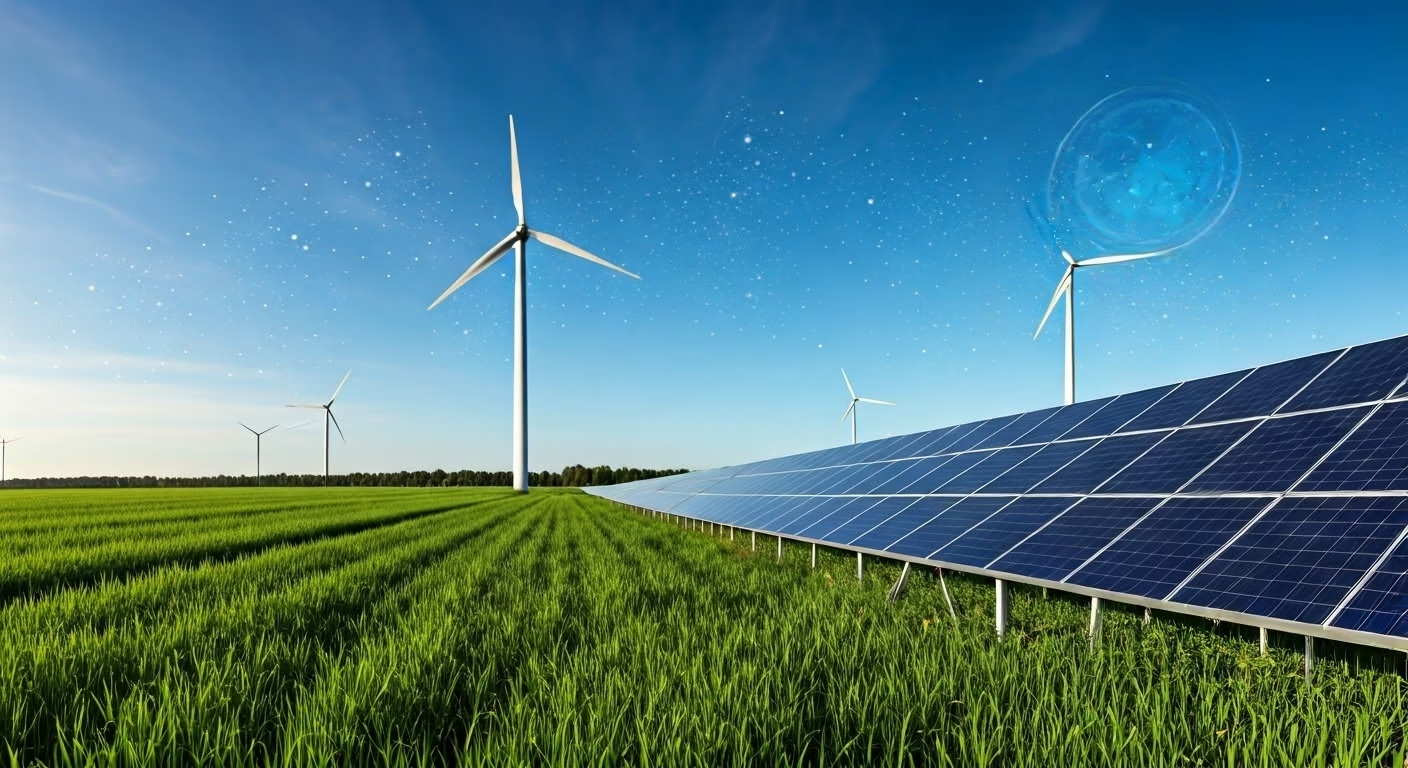Key Highlights
- Global energy storage capacity needs to increase dramatically to achieve climate goals and accommodate the growing renewable energy sector.
- Battery energy storage systems, especially lithium-ion, are experiencing substantial growth, driven by falling costs and technological advancements.
- Australia is making significant strides in energy storage, particularly in pumped hydro and large-scale battery projects.
- Supportive policies and market mechanisms are crucial for accelerating energy storage deployment and effectively integrating renewable energy sources into the grid.
- Continued investment in research and development of energy storage technologies is essential to unlock further cost reductions and performance improvements for a sustainable energy future.
Introduction
The issue of climate change requires quick changes in many areas, especially in energy. Energy storage is very important for taking good climate action. It helps us move to cleaner energy and a more sustainable future. By storing extra energy from renewable sources like solar and wind, energy storage systems can help manage their irregular supply and use all their potential. This blog looks at why expanding energy storage is so important for reaching climate goals. It discusses new advancements, opportunities, and the key role energy storage plays in reducing carbon in the power sector.
The Importance of Energy Storage in Achieving Climate Goals

To reduce the worst effects of climate change, we need to use renewable energy sources like solar and wind. However, these sources can be unreliable because they depend on weather conditions. This makes it hard to fit them into the current power grid. Energy storage becomes an important solution here.
Energy storage systems help by storing excess energy produced when there is a lot of renewable generation. They can then release this energy when demand is higher than supply. This helps keep the grid stable, matches energy supply and demand, and allows us to use more renewable energy sources. This is important for moving towards a cleaner and more sustainable energy system.
Overview of Australia’s Climate Commitments
Australia is working hard to tackle climate change. One important goal is to reach net zero emissions by 2050. To do this, Australia is promoting the use of renewable energy like solar and wind power.
The government understands that energy storage is vital for this shift. It is focused on supporting energy storage projects across different technologies. The Australian Renewable Energy Agency (ARENA) is crucial in funding and developing new energy storage solutions.
Australia’s strong efforts in renewable energy and energy storage show its commitment to meet climate goals. It aims to create a sustainable energy future.
Role of Energy Storage in Reducing Carbon Footprint
Reducing carbon footprints is very important for the world. Energy storage systems play a big part in this change. They help clean energy technologies, like solar PV and wind power, work better in our power generation systems.
When renewable sources produce extra energy, energy storage systems grab that power and keep it safe. This action helps us use less power from fossil fuel plants, which are the main sources of greenhouse gases. By moving towards cleaner energy, we can fight climate change.
Energy storage also lets us change how we use energy. It helps us move energy use away from busy times, which can lower carbon emissions even more.
Advancements in Energy Storage Technologies

The energy storage sector is always changing and improving. New battery technologies are developing quickly. This is because more people are wanting electric vehicles and solutions for large power grids. These improvements lead to better energy density, higher performance, and lower costs. Because of this, energy storage is becoming a better choice for many uses.
We are also seeing great new ideas in other types of energy storage. This includes pumped hydro storage, flow batteries, and thermal energy storage. These innovations show how lively the energy storage field is. They also show how much it can help create a sustainable and strong energy future.
Recent Breakthroughs in Battery Technology
Battery energy storage is becoming a key part of the world’s move to cleaner energy. This change is happening because of great progress in battery technology. Lithium-ion batteries have changed the game, with Lithium Iron Phosphate (LFP) leading the way. LFP is popular because it is cost-effective, stable, and lasts a long time. It is especially being used in big energy storage projects and electric vehicles.
Nickel Manganese Cobalt (NMC) batteries are also a common choice. They are important in cases where high energy density is needed, such as electric vehicles that require a longer range. The ongoing work to improve NMC tech helps keep it relevant for certain storage needs.
These advancements in battery technology show we are moving toward a future filled with efficient and sustainable energy storage options.
Innovations in Pumped Hydro Storage in Australia
As Australia moves towards a future with renewable energy, pumped hydro storage is becoming key. It is a reliable and scalable solution for storing energy. The Australian Renewable Energy Agency (ARENA) supports pumped hydro projects because they can provide a lot of energy storage capacity and help keep the energy grid steady.
Pumped hydro storage works on a simple idea. When there is extra energy, water is pumped to a higher place, like a reservoir. Later, during peak times when more energy is needed, that water is released through turbines to create electricity. This technology is a cost-effective way to store energy for long periods. It is great for handling the ups and downs of renewable sources like solar and wind.
Australia has plenty of natural resources and government support. This puts the country in a good spot to make pumped hydro storage a key part of its clean energy future. It will help keep the grid stable and ensure a smooth move to carbon-free energy.
Impact of Energy Storage on Renewable Energy Integration
The use of renewable energy sources like solar and wind power is increasing. This makes it important to find good ways to connect them to the power grid we already have. Energy storage is very important here. It helps us store excess energy created when renewable energy production is high.
These energy storage systems solve the problem of having energy that doesn’t come all the time. They help keep our power supply stable and dependable. This improvement makes the power grid more stable and strong. Eventually, it helps us move towards a future that runs on clean and sustainable energy sources.
Enhancing Grid Stability with Energy Storage
Maintaining grid stability is a big challenge as more renewable energy sources connect to the electricity grid. Energy storage technologies can help solve this problem.
One important way energy storage helps is through frequency control. Changes in electricity generation and energy demand can cause frequency to vary, which affects the grid’s reliability. Energy storage systems can quickly respond to these changes. They either give out or take in power to keep the frequency at the right level.
Being able to control frequency changes in real-time is vital for a stable and strong grid. This is especially true with more solar and wind energy being used.
Case Studies: Successful Energy Storage Projects in Australia
Australia boasts an array of successful energy storage projects, showcasing the nation’s advancement in deploying utility scale storage solutions to support its renewable energy transition. From large-scale battery installations to innovative pumped hydro projects, Australia demonstrates its dedication to a sustainable energy future.
One notable project is the Hornsdale Power Reserve in South Australia, a 150MW/194MWh lithium-ion battery system paired with a wind farm. This flagship project provides essential grid services, including frequency control and backup power, highlighting the crucial role of battery storage in balancing the grid and supporting the reliability of renewable energy sources like solar PV.
Another significant venture is the Snowy 2.0 project, an ambitious pumped hydro storage scheme expanding the existing Snowy Mountains Hydroelectric Scheme. With a planned capacity of 2GW/350GWh, Snowy 2.0 will provide long-duration energy storage, ensuring grid stability and facilitating the integration of more renewable energy into the system.
| Energy Storage Project | Technology | Capacity | Location | Key Features |
| Hornsdale Power Reserve | Lithium-ion Battery | 150MW/194MWh | South Australia | Grid services, frequency control, backup power |
| Snowy 2.0 | Pumped Hydro | 2GW/350GWh | New South Wales | Long-duration energy storage, grid stability, renewable support |
Conclusion
Energy storage is very important for meeting climate goals. This is especially true for Australia, which aims to lower its carbon footprint. New battery technology and pumped hydro storage are making energy storage better. This helps to keep the grid stable and supports the use of renewable energy sources. Successful projects in Australia show great examples for the world’s energy transition. Using these technologies not only helps the environment but also boosts economic growth. By focusing on energy storage, we can work toward a greener future and fight climate change effectively.
Frequently Asked Questions
What are the Key Benefits of Energy Storage for Climate Goals?
Energy storage is a big chance to reach net zero emissions. It helps use more renewable energy sources. It also reduces the costs of battery storage. This change supports a cleaner energy future.
How Does Energy Storage Facilitate the Use of Renewable Energy?
Energy storage investment helps keep extra energy from renewable energy sources. This means a steady power supply to the grid, even when the sun is not shining or the wind is not blowing. It also works as a dependable backup power source.
What are the Latest Technological Advancements in Energy Storage?
Advancements in battery energy storage system technologies, especially with EV batteries that use lithium-ion, are lowering costs and growing market share. These developments are making a future with reliable and sustainable energy storage solutions possible.


Thanks for sharing. I read many of your blog posts, cool, your blog is very good.